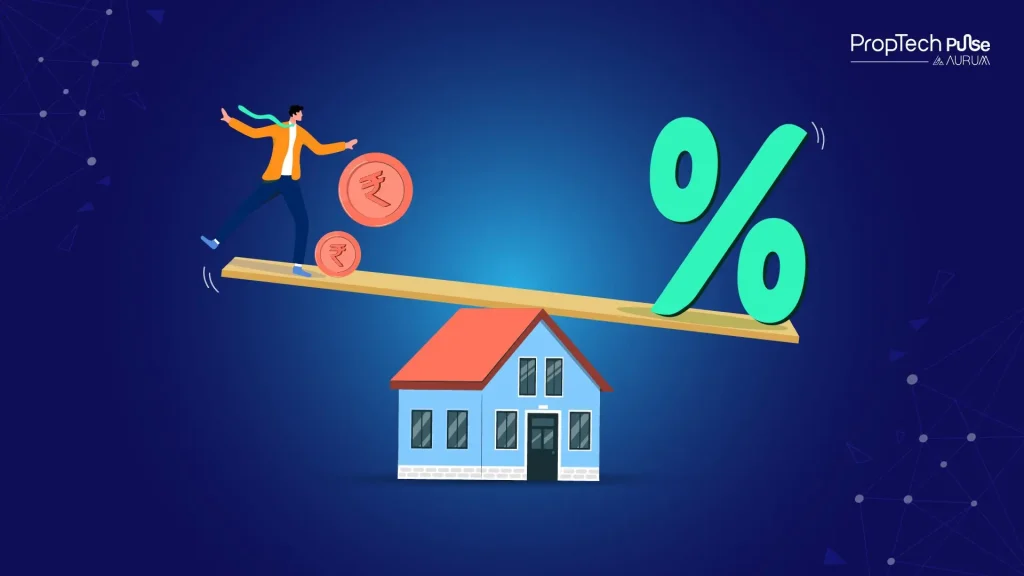Loan Against Property in 2025: Looking to unlock the value of your property in 2025? A Loan Against Property (LAP) is an effective way to access significant funds without selling your asset. By pledging your residential, commercial, or industrial property, you can secure funds for business expansion, higher education, medical expenses, or even debt consolidation. With interest rates ranging from 9% to 12%, knowing how to navigate eligibility and lender policies is crucial to getting the best deal.
LAPs offer flexibility, allowing borrowers to retain ownership of their property while leveraging it for financial needs. However, interest rates and approval speed depend on multiple factors such as credit score, property value, income, and lender type. Here’s a detailed guide to help you understand LAP in 2025 and maximize your benefits.
What Is a Loan Against Property (LAP)?
A Loan Against Property (LAP) is a secured loan where your property serves as collateral. Unlike personal loans, LAP offers larger loan amounts at comparatively lower interest rates because it’s backed by a tangible asset. Borrowers can use LAP funds for:
- Business expansion
- Higher education or overseas studies
- Medical emergencies
- Debt consolidation
- Personal investments or large purchases
The loan amount is primarily determined by the market value of the property and the borrower’s repayment capacity. Banks and NBFCs typically offer up to 60–70% of the property’s market value, depending on their policies.
Loan Against Property Interest Rates in 2025
Interest rates for LAP in 2025 vary based on lender type, borrower profile, and property type.
| Lender | Interest Rate (p.a.) Range |
|---|---|
| HDFC Bank | 9.05% – 13.50% |
| Axis Bank | 9.25% – 10.00% |
| SBI | 9.20% – 10.50% |
| IDFC FIRST Bank | From 9.50% |
| Kotak Bank | From 9.50% |
Typical ranges:
- Starting rates: 8.50% – 9.50% p.a.
- Upper range: 11% – 13.5% p.a.
Borrowers with high credit scores and stable incomes can negotiate lower rates, while commercial or industrial property loans may attract slightly higher interest.
Read about: Festive Season Personal Loan Options: Top Banks Offering Lowest Interest Rates
Eligibility Criteria for LAP
To qualify for a loan against property, you generally need to meet the following requirements:
- Age: 21–70 years at loan maturity
- Occupation: Salaried or self-employed with stable income
- Credit score: 700+ preferred for better approval and lower rates
- Property ownership: Must be legally owned, free from disputes, and marketable
- Residency: Indian residents, NRIs, and OCIs (depending on lender)
Meeting these eligibility criteria ensures faster loan processing and access to competitive interest rates.
Factors That Impact LAP Interest Rates
Several factors influence the interest rates offered by lenders:
- Lender Type: Banks usually offer lower rates than NBFCs, but NBFCs may provide faster processing.
- Property Type: Residential properties often receive lower rates compared to commercial or industrial properties.
- Credit Score: Higher credit scores translate into lower interest rates and better loan terms.
- Loan Amount & Tenure: Larger loans or longer tenures may increase the interest rate.
- Employment Type: Salaried individuals often receive more favorable terms than self-employed borrowers.

7 Tips to Get the Best Interest Rates & Faster LAP Approval
1. Maintain a High CIBIL Score
A score above 700 demonstrates creditworthiness and can significantly reduce your interest rate. Pay off existing debts and avoid defaults before applying.
2. Choose the Right Lender
Compare banks and NBFCs to find the best combination of interest rate, processing fee, and approval time.
3. Keep Property Documents Ready
Ensure your property documents are complete, legally clear, and marketable. Dispute-free properties speed up approval.
4. Opt for Shorter Tenures if Possible
Shorter repayment tenures reduce interest burden and improve your loan-to-value ratio.
5. Negotiate Processing Fees and Terms
Many lenders are flexible with processing charges, prepayment options, and tenure limits. Always negotiate before signing.
6. Opt for a Fixed or Floating Rate Wisely
Depending on market conditions, fixed rates offer stability, while floating rates may be cheaper if interest rates decline.
7. Consolidate Loans Strategically
Using LAP for debt consolidation can lower your overall EMI burden, making repayment easier and improving your eligibility for future credit.
Conclusion
A Loan Against Property in 2025 is an ideal solution for those seeking large funds at lower interest rates while retaining ownership of their property. By understanding eligibility criteria, comparing lenders, and strategically negotiating terms, borrowers can maximize benefits and secure faster approvals.
Interest rates will vary based on property type, creditworthiness, and lender policies, but proactive planning and proper documentation can significantly reduce costs. Whether you are funding education, business expansion, or medical expenses, LAP remains a flexible and effective financing option.
In 2025, the key to getting the best LAP deal is preparation: maintain a strong credit profile, select the right lender, and plan your repayment strategy carefully. By doing so, you can unlock the full potential of your property without financial stress.
Also read: BMW G 310 RR Limited Edition Launched in India at Rs. 2.99 Lakh
FAQs of Loan Against Property in 2025
1. What is the maximum loan amount for LAP in 2025?
Most banks and NBFCs offer up to 60–70% of the property’s market value, depending on property type, borrower profile, and repayment capacity.
2. Can NRIs apply for LAP in India?
Yes, NRIs and OCIs can apply, but eligibility and documentation requirements vary by lender. Some banks may have additional residency conditions.
3. How can I get the lowest interest rate on a LAP?
Maintain a high credit score, choose residential property over commercial, compare multiple lenders, and negotiate processing fees and repayment terms.
4. What is the typical processing time for LAP approval?
Processing times vary by lender, ranging from 7–30 days, depending on property verification and document readiness.
5. Can LAP be used for multiple purposes?
Yes, the loan is flexible and can be used for business expansion, education, medical emergencies, debt consolidation, or personal investments without selling the property.

2 thoughts on “Loan Against Property in 2025: 7 Tips to Secure the Best Interest Rates & Faster Approval”